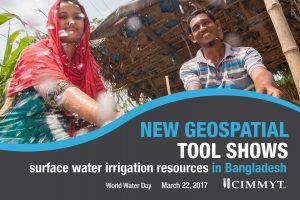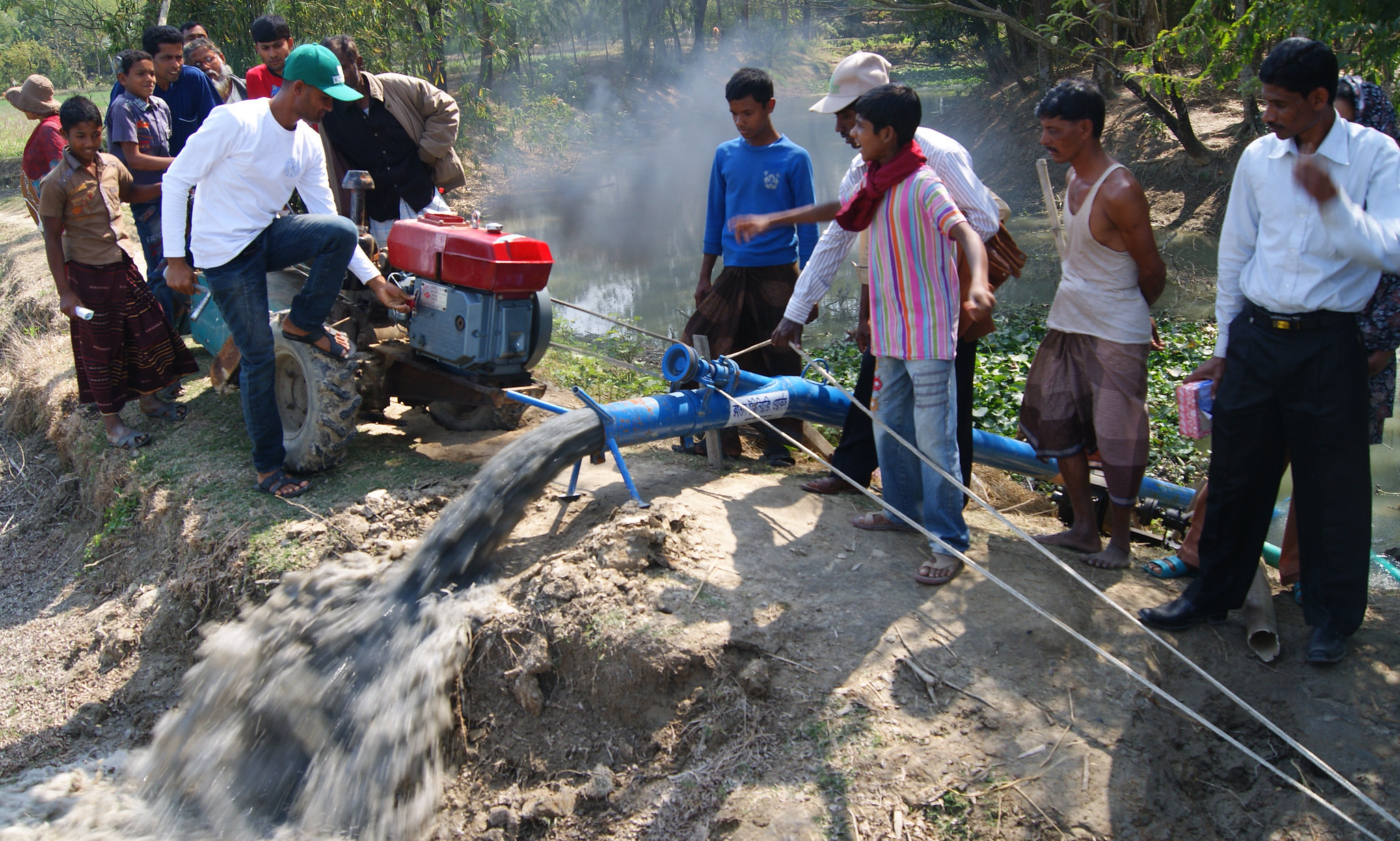
EL BATAN, Mexico (CIMMYT) – Most current food security projections show that staple crop production must double by 2050 to keep up with global need, which will continue to expand due to population growth and changing dietary demands.
In South Asia, where population pressures pose a significant food security challenge, yields of major cereal crops have not changed dramatically since the Green Revolution of the 1970s and 1980s. This has prompted regional governments and development practitioners to focus instead on efforts to expand double cropping – the practice of growing at least two crops per year on the same piece of land – in order to boost productivity on an annual basis.
This approach is in line with sustainable intensification techniques, which aim to boost production, rather than encroach on natural ecosystems and harm the environment by expanding farmland into limited natural areas.
Scientists with the International Maize and Wheat Improvement Center (CIMMYT) are researching how best to increase double cropping in Bangladesh, which, as South Asia’s most densely populated country, poses unique food security challenges.
In the northwest of the country, farmers already rotate at least two crops in the same field each year using groundwater irrigation to overcome drought risks during the dry winter season.
“Most development initiatives favor the use of groundwater resources for irrigation, although in Bangladesh, ground water extraction can result in high energy costs and in some areas can present a health risk due to natural arsenic contamination of groundwater,” said Timothy Krupnik, systems agronomist at CIMMYT.
“In support of government programs recommending the conjunctive use of surface water as an irrigation alternative, we investigated the available land in Bangladesh that could be reliably cropped to wheat, maize, or rice in double cropping patterns,” Krupnik said, adding that the effort resulted in a new online geospatial tool that can be used by water resource planners and policymakers to target the use of surface water in support of sustainable intensification. It helps identify surface water irrigation resources and land area most suited for double cropping and sustainable intensification.
“Using satellite data for irrigation technology targeting in Bangladesh enabled us to identify areas that are under low input and output crop production in a region with abundant surface water,” said Urs Schulthess, CIMMYT’s remote sensing scientist involved in developing the geospatial tool. “This is an example of sustainable intensification that does not deplete water resources.”
Instead of extracting water from underground aquifers, surface water irrigation involves deploying water through low-lift irrigation pumps and canal distribution networks managed by water sellers who direct water to farmers’ fields. Although Bangladesh is likely to remain largely reliant on groundwater irrigation, use of available surface water presents a low-energy and low-carbon emissions alternative in select areas of the country, Krupnik said.
The research conducted by scientists funded by the CIMMYT-led Cereal Systems Initiative for South Asia (CSISA) project, provides initial evidence to support a government of Bangladesh policy aimed at stimulating a $500 million investment in development aid from donors to help farmers transition from rice-fallow or rainfed systems to surface water irrigation and double cropping. The funds form part of an overall request for investment of over $7 billion to support agricultural development in southern Bangladesh.
After mapping rivers and freshwater canals in southern Bangladesh with the new tool, the scientists conservatively estimate that at least 20,800 of fallow and 103,000 hectares of rainfed cropland could be intensified through surface water irrigation to substantially increase cereal crop production through double cropping. These figures account for land set into non-crop reserves to limit risks of nitrate or phosphorous contamination of rivers and canals.
Groundwater irrigation techniques have been difficult to implement in the south of the country due to high energy pumping costs for groundwater, and additional challenges posed by saline shallow water tables. Currently, about 1.7 million farming households in Bangladesh simply leave cropland fallow and unproductive after the monsoon season, according to the World Bank.
By integrating the use of groundwater with lower-cost surface water irrigation, farmers could benefit from increased cropping intensity.
To evaluate potential land productivity resulting from conversion from fallow or rainfed crops to surface water irrigated maize, wheat, and rice, CIMMYT scientists measured yields produced by farmers on their own farms and in farmer-managed demonstrations implemented by the CSISA project.
The three crops are among the most important cereals grown in Bangladesh for food security and income.
Based on analysis, CIMMYT’s scientists estimate that if 25 to 75 percent of fallow or low-intensity land is converted to irrigated maize, production could increase from 10 to 14 percent or from 29 to 42 percent, respectively. Conversion to wheat could increase production from 9 percent to 10 percent or from 26 percent to 31 percent. On the other hand, rice is projected to increase only about 3 percent under such conditions.
Overall, increasing maize and wheat production through double cropping could generate revenues from $36 to $108 million each year for farmers, Krupnik said.
 Innovations
Innovations 